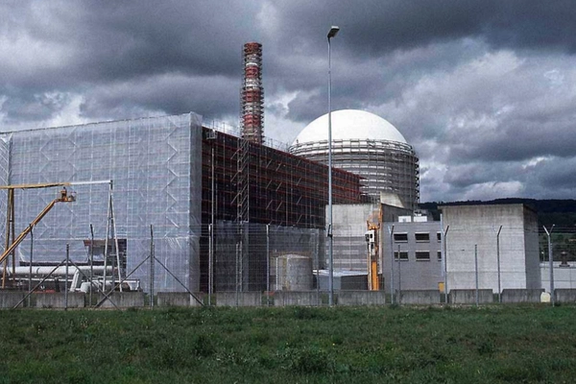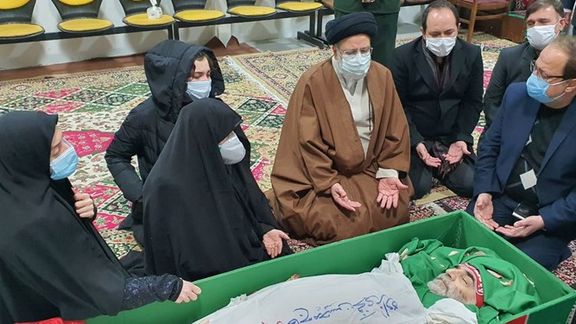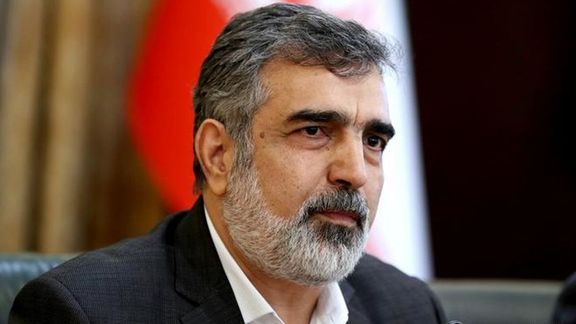Iran Official Says Security Of Nuclear Facilities In Focus

Behrouz Kamalvandi, the spokesperson for the Atomic Energy Organization of Iran, has affirmed that Iran's nuclear program and facilities have faced "several attacks," in recent years.

Behrouz Kamalvandi, the spokesperson for the Atomic Energy Organization of Iran, has affirmed that Iran's nuclear program and facilities have faced "several attacks," in recent years.
"This is an area where there are security concerns. It is an undeniable fact, we have been attacked several times. The enemies are trying to destroy the nuclear industry and are planning to take it from Iran," said Kamalvandi in an interview on Friday.
Making no reference to the nature and timing of the attacks, he added that Iran’s nuclear officials have taken into account “security issues” over the past two years.
One of the most significant attack on Iran’s nuclear program occurred in 2010 when the Stuxnet computer virus disrupted the control systems of the country’s most sensitive and tightly watched nuclear facility in Natanz. The Dutch daily Volkskrant reported in January that the malware, widely believed to be an American-Israeli creation, was delivered by a Dutch engineer working at the enrichment plant.
In 2020 and 2021, two internal explosions hit Iran's highly protected Natanz uranium enrichment facility, inflicting considerable damage. The attacks were attributed to Israel, although Iran's chief adversary never took responsibility. In November 2020, Mohsen Fakhrizadeh, known as the father of Iran's nuclear program was assassinated in broad daylight near Tehran.

In another part of his interview, Kamalvandi hailed what he called the “technological achievements” of Iran’s nuclear program, saying they have had positive impacts on “people’s living standards as well as on the country’s political and economic issues.” In fact, Iran's economy has tremendously suffered because of sanctions imposed for its nuclear program. In more than a decade, the country's economic growth has averaged zero.
However, Kamalvandi claimed that the sanctions have turned into “a strong point for the country and the nuclear industry.”
Over the past six years, the rial, Iran’s national currency, has fallen 15-fold, fueling inflation and plunging millions of citizens into poverty. Eqtesad 24 news website reported in February that almost one in every three Iranians is currently living below the poverty line as a result of very high inflation in the past five years.
Reports received earlier in March by Iran International indicate a significant drop in people’s purchasing power and the elimination of many food items in their diets, including red meat, chicken, and fish. According to Iranians newspapers, canned tuna prices have jumped by 113% in the past 12 months and prices for red meat by 100%.
Kamalvani also announced Tehran’s plans to “develop the capacity of Iran’s nuclear industry” and construct new nuclear power plants in the country.

“To build a 1,000 megawatts nuclear plant requires an investment of about $5 billion. So when you are planning to add 20,000 megawatts of power to the grid, it requires a $100 billion investment,” said the spokesperson for Iran’s Atomic Energy Organization, further adding that Tehran cannot rely on domestic sources alone to further its nuclear projects.
Nevertheless, he did not specify which foreign funding sources the Iranian government would employ to achieve these ambitious goals. Most international investors are reluctant to do business in Iran due to sanctions and the country’s volatile political situation. What is clear is that Iran cannot afford to develop its nuclear energy sector on its own. In January, Vahid Shahri, an economics professor, warned that Iran’s economic needs total $500 billion is pushing the country towards “catastrophe.” In a desperate attempt to cover its expenses, the government has considerably increased taxes.
Citing growing relations between Tehran and Moscow, Kamalvani stated that Iran “has agreements with Russia” to build several nuclear power plants. “Bushehr plant has been delivered [by Russia] and two others are now under construction,” he went on to say.
In recent years, Tehran and Moscow have strengthened their political, military, communication, and cyber ties, prompting concerns among Western countries and their allies. Their cooperation has grown significantly, particularly since the Russian invasion of Ukraine in 2022.
Kamalvandi further hailed Iran’s efforts in the International Atomic Energy Agency (IAEA), saying despite “massive campaigns by opposing sides” in the IAEA, Tehran has been “generally successful” in its bid to lessen international pressures on the Islamic Republic and its nuclear program. “We are now in a situation where the IAEA does not play into our enemies’ hands and is not at their disposal the way they want,” he stressed.
Contrary to what the Iranian official alleges, the IAEA has been vocal about the irregularities and violations in Tehran’s nuclear program. During the recent Board of Governors’ meeting in Geneva earlier in the month, IAEA Director-General Rafael Mariano Grossi highlighted concerns, including the deactivation of surveillance devices, barring of senior inspectors, and refusal to disclose new nuclear facilities by the Iranian regime.